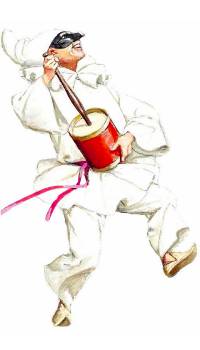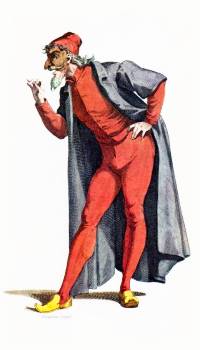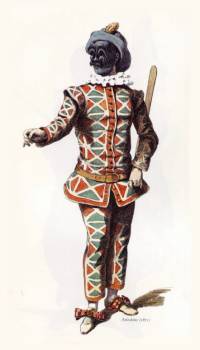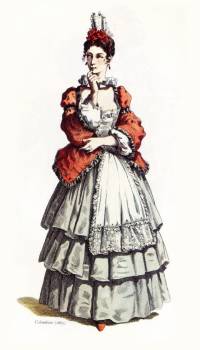Carnevale is an Italian festivity that does not have a fixed date. As we know it today, Carnival stems from Christianity: it is the period right before Lent, characterized by fasting. This celebration was already in use before the advent of Christianity and corresponded to the Roman Saturnalia, where social norms were reversed, and people use to wear costumes and could be whomever they wanted. This tradition is still firmly present in Italy, so much so that it is very common to find people in disguise on the streets.
The Carnival season is just around the corner, and many of you might be unfamiliar with the Italian customs of this festivity.
Italian Carnival boasts many traditional masks, mostly centered around the typical characters of the Italian Commedia dell’Arte, but also closely linked to legends, customs, and local traditions.
Let’s look more closely at some of the most loved masks!
Stenterello

The quintessential Florentine character is doubtlessly Stenterello. He was conceived in the 18th century by Luigi Del Buono, a Florentine actor, famous for his popular comedies. Recognizable by his prominent nose, Stenterello represents the typical inhabitant of Florence: talkative, impulsive, and fearful, but at the same time wise, ingenious, and with a strong sense of justice. He loves puns and sometimes he can engage in full-mouthed phrases and bold gestures.
He wears a very colorful costume: a blue jacket, a pea-green polka-dotted shirt, and dark short pants, from which – in some depictions – a bottle sprouts, emphasizing his tendency to drink.
Pulcinella

Pulcinella is a Neapolitan character derived from the Commedia dell’Arte in the late 1500s, created by the actor Silvio Fiorillo. Pulcinella is one of the most famous costumes, with its all-white robes and a black mask that covers the upper part of the face, leaving the mouth uncovered. His name probably comes from the mispronunciation of a very common Naples last name, Polsinelli.
Pulcinella embodies the one who is aware that he is in trouble to the core, but who nevertheless faces with a smile the challenges that life puts before him. He is not afraid of mocking powerful people, revealing to everybody the truth that had been hidden until then.
Pantalone

Also Pantalone comes from the Commedia dell’Arte, but unlike Pulcinella, he comes from northern Italy, from Venice. He represents the typical 16th-century merchant, as Venice at that time was a large Maritime Republic and based its wealth almost exclusively on trade. Pantalone is an old, lustful, and extremely stingy man. He loves to show his authority by interfering in matters that do not concern him and never misses an opportunity to show his grumpy nature.
Pantalone’s outfit is very simple: he wears red tights and a red shirt with a black cape atop. On his feet he wears slippers and at his waist, he has a belt. On his face, he has a mask that covers the upper part of it and on his head, he wears a cap that looks like an extension of the mask itself.
Arlecchino

Arlecchino is perhaps the most famous mask in the Italian tradition. He comes from Bergamo, near Milan, but he is often associated with Pantalone, since he serves the wealthy merchant. He is very lazy, but he stands out from the crowd by his cleverness and his courage.
Arlecchino is known all over the world because of his colorful costume. Legend has it that his costume is multi-colored because it is made from bits and pieces of other costumes since Arlecchino is very poor and cannot afford one of his own. Also, the white cap and the black mask are emblematic of this man, who walks around the streets with a wooden spatula.
Colombina

Colombina traces her origins in Venice and is the only female mask amid a purely male-dominated tradition. She is a common woman, very shrewd, lively, and graceful. Always at young Rosaura’s side, Colombina is a very devoted servant and is willing to do anything to make Rosaura happy. In fact, she is known to be a great liar and cunning as few.
The archetype embodied by the figure of Colombina goes back to Plautus’ comedy: the clever and cynical handmaiden, constantly ready to suggest mischief to her mistress. Starting from the 16th century, within the Commedia dell’Arte Colombina is always portrayed as Alrecchino’s wife or lover, even though the two come from different regions.
Colombina wears a bonnet and a blue dress with blue and white flowers on it. On the buckle of the shoes, a blue bow completes the outfit.
Photo credits: Wiki Commons
